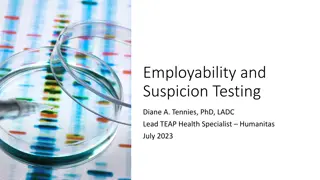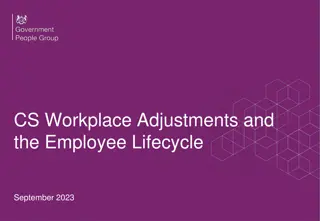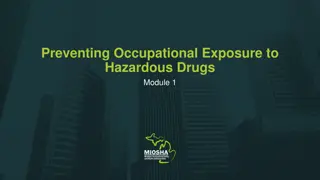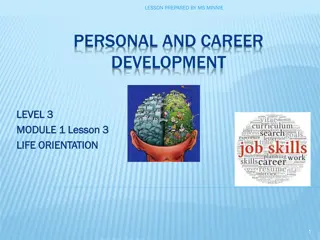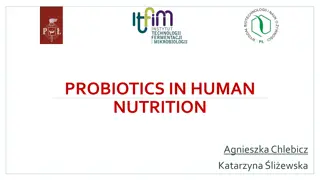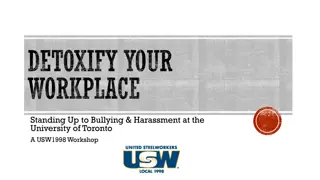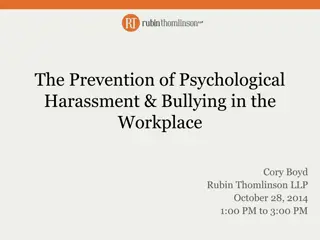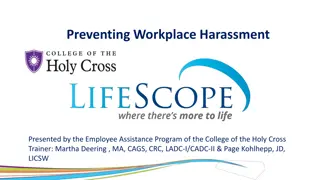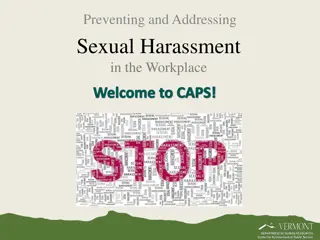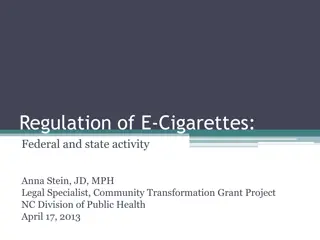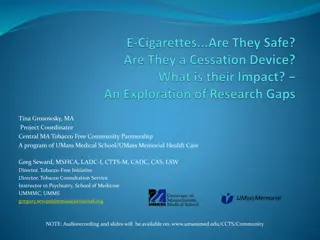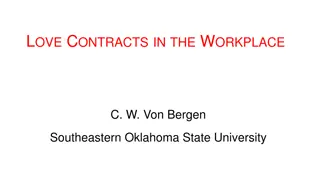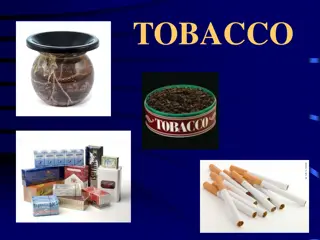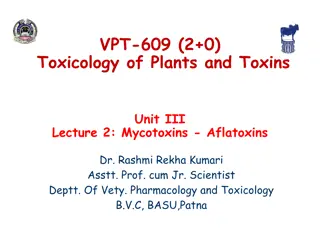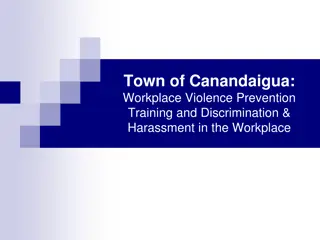Carcinogens in the Workplace
Carcinogens in the workplace pose a significant risk to workers, leading to a high number of cancer diagnoses and deaths each year. Employers must take responsibility for protecting their workers by implementing proper measures to minimize exposure to these harmful substances. The STOP principle, which includes substitution, personal protective equipment, technical measures, and organizational measures, can help in reducing risks associated with carcinogens at work.
Download Presentation

Please find below an Image/Link to download the presentation.
The content on the website is provided AS IS for your information and personal use only. It may not be sold, licensed, or shared on other websites without obtaining consent from the author.If you encounter any issues during the download, it is possible that the publisher has removed the file from their server.
You are allowed to download the files provided on this website for personal or commercial use, subject to the condition that they are used lawfully. All files are the property of their respective owners.
The content on the website is provided AS IS for your information and personal use only. It may not be sold, licensed, or shared on other websites without obtaining consent from the author.
E N D
Presentation Transcript
Introduction "To put things in context: two million people were killed every year in the fights during World War I, and everyone agrees that it was a terrible slaughter. But the reality is that it happens every year, all over the world, with the same number of workers dying as a result of just going to work". - Kevin Myers, Chairman of the International Association of Labour Inspection (IALI) 2
The facts Some figures for Europe: 120,000 cancer diagnoses every year due to carcinogens in the workplace 80,000 deaths a year due to carcinogens in the workplace Annual cost of 4 to 7 billion euros Exposure to carcinogens is always dangerous, but occupational exposure increases the risk of cancer. Indeed, many workers are unintentionally exposed to high levels of carcinogens on a daily basis, and this exposure lasts for many years. 3
What are carcinogens? Carcinogens = substances that can cause cancer by damaging human DNA or affecting the functioning of body cells. Different types, which can be divided into two categories: Carcinogenic substances with their own dangerous properties (e.g. certain pesticides). Carcinogenic substances created by certain processes (e.g. exhaust fumes or wood dust). They penetrate the body when they are inhaled when they are touched when they are swallowed 4
Protecting the workers It is the employer's responsibility to develop a well-being policy that protects the health and safety of workers. What are the dangers? Who is at risk? How big are the risks? Which measures do we take? Do the measures have sufficient effect? The employer must take steps to avoid exposure to carcinogens as far as possible by carrying out a risk assessment. 5
STOP principle Personal protective equipment Technical measures Organisational measures Substitution If not possible If not possible If not possible Hierarchy ! 6
1. Substitution = the carcogenic substance is replaced by another substance that is not or is less dangerous for the health and safety of workers For example, replacing diesel-powered forklift trucks with electric- powered forklift trucks. 7
2. Technical measures = technical equipment helping to control emissions at source and thus avoid exposure to carcinogenic substances. Non-ventilation measures, for example handling aids to limit the time spent by a carcinogenic substance outside its container. Ventilation measures, e.g. integrated extraction systems during welding. Combination of containment and ventilation, e.g. ventilated enclosures such as fume hoods, extractor hoods or laminar air flow cabinets. 8
3. Organisational measures = avoid or minimise exposure to carcinogens by making adjustments in the place, time and knowledge of workers. For instance Provide dedicated workspaces and restrict access to them Shift rotation system to reduce exposure time Educating workers on how to work safely Instruction sheets, labelling and warning signs Adapted facilities to wash, change clothes, eat/drink 9
4. Personal protective equipment = Personal protective equipment (PPE) helps to keep carcinogens away from lungs, skin and eyes. It is to be used as a last resort! For instance, when technical and organisational measures are not enough for workers producing dangerous medicines, chemical protection suits with a breathable air supply system can be useful. 10




